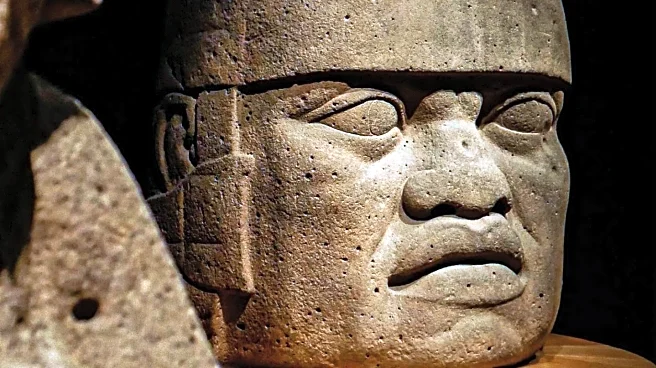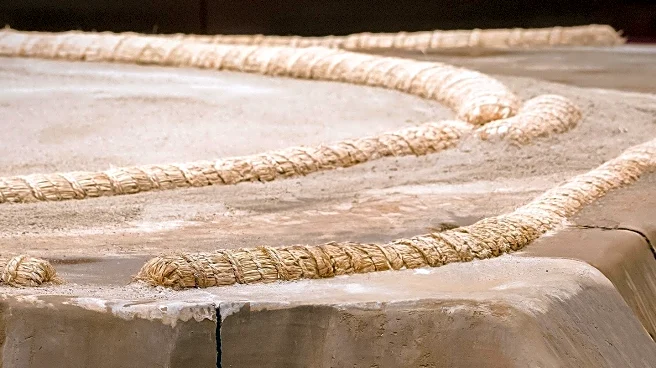What's Happening?
Researchers from the Ca’ Foscari University of Venice have identified traces of indigotin, a dark blue compound, on stone tools excavated from a cave in the Georgian foothills of the Caucasus mountains. These tools date back to the Upper Paleolithic period, approximately 34,000 years ago. The discovery marks the first evidence of prehistoric people engaging in the complex process of extracting blue dye from the woad plant, known scientifically as Isatis tinctoria. This process involved grinding the plant, fermenting it with water, and allowing it to dry, resulting in the production of indigotin. The study, published in Plos One, highlights the use of advanced micro spectroscopy techniques to detect the presence of this compound, which could have been used for dyeing, medicinal purposes, or other applications.
Why It's Important?
This discovery provides a rare insight into the cognitive and technological capabilities of Upper Paleolithic humans, suggesting a level of sophistication in their use of plant resources beyond basic subsistence. The presence of indigotin on these tools indicates that prehistoric humans may have engaged in complex activities such as dyeing or medicinal practices, which were previously undocumented in this era. This finding enriches the understanding of human behavioral complexity during the Paleolithic period, challenging existing narratives that primarily focus on stone artifacts and animal bones. The study also opens new avenues for research into the processing of secondary compounds from plants, which could further illuminate the diverse uses of plant materials by early humans.
What's Next?
Future research may focus on exploring other archaeological sites for similar residues, potentially uncovering more about the use of plant-based compounds in prehistoric times. This could lead to a broader understanding of the cultural and technological advancements of early human societies. Additionally, the methodologies developed in this study could be applied to other archaeological contexts, enhancing the ability to detect and analyze perishable materials that have not survived the test of time.
Beyond the Headlines
The discovery of indigotin in a Paleolithic context raises questions about the social and cultural implications of dye production and use in prehistoric societies. It suggests that early humans may have had aesthetic or symbolic reasons for creating and using dyes, which could reflect social structures or cultural practices. This finding also highlights the potential for interdisciplinary research, combining archaeology, chemistry, and anthropology to reconstruct the lifeways of ancient populations.











